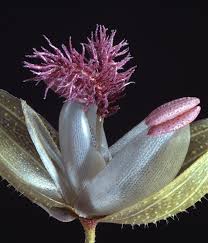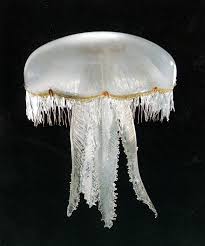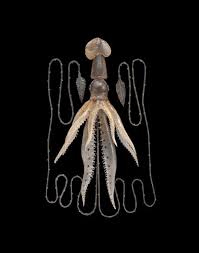Opportunities to learn Scientific Glassblowing skills in the UK are gold dust. Scientific Glassblowing is on the Radcliffe Red List of Endangered Crafts. My proposal for the AN Professional Development Bursary is to research flameworked glass at the Corning Museum of Glass, then travel to Salem, New Jersey to attend a 5 day flamework skills course with Paul Stankard and Shane Fero at Salem Community College. While at Salem I will also research their 2 yr Scientific Glassblowing Degree course. This is the only course of it’s kind in America. There are no courses in the UK.
Flora and Fauna, Flamework Skills Course at Salem Community College, USA
How little I know.
It was very humbling attending this course. I realised my journey really had only just begun.
The AN Professional Development Bursary provided me with financial support to attend the 5 day Flora and Fauna Flamework course with Paul Stankard and Shane Fero at Salem Community College, New Jersey, USA.
We worked with soda and borosilicate glass, to create natural forms. Paul is a master in creating natural compositions within a paperweight form. He showed us how to do this and many students worked on marble forms and paperweights. Shane Fero demonstrated techniques to model bird and human forms without encapsulating them in glass.
I realised on the second day that I wouldn’t have time to try all the techniques demonstrated within the week. I decided to listen, watch and then experiment with material preparation. I let go of any aspiration to make anything accomplished. I also came face to face with how little I know technically!
A revelation that came on day 3 was how lovely Soda glass was to work with. I had always been told that soda glass was difficult to work with and to avoid this if possible. Borosilicate being much easier in the sense that it doesn’t crack so easily. Here at SCC people were extremely positive about it and extolled the many aspects that make soda an attractive choice. I found that the glass had a flow to it, the working time was a little longer. The colour range too was much more diverse and appealing. The potential to mix with other glass states such as paints, powders and frits were much broader. I felt inspired and resolved to go home and experiment with these new possibilities.
Another huge discovery for me was that I really enjoyed working on a small flame, on a small scale. Making marbles and paper weights involved big flames and a lot of heat. After attempting to make 2 marbles I had to admit to myself that this was not what I had come on the course to learn, despite it being an enjoyable and tempting technique. I knew that if I focused solely on this then I would reach the end of the week wishing I had stayed open to all the other techniques being shown to us. Due to my over tired state I also didn’t have the energy.
I experimented with different colours, both in borosilicate and soda, and tried material preparation techniques that were new to me to create a complex and sensitive colour range.
Rackow Research Library
The Rackow Research Library is an amazing resource. It’s aim is to be the world’s number 1 resource on all things glass related. It’s full of fascinating books, periodicals, leaflets, dvd’s, exhibition catalogues. They archive all kinds of fragile and unique artefacts and documents related to all kinds of areas, such as glass design, manufacture, artistry and history. I was given a tour of the library facilities and archive and shown original design drawings by luminary artists such as Tiffany, Rudolph and Leopold Blashka, Dale Chihuly, all beautifully archived in the pure crisp whiteness of acid free tissue paper.
The staff are extremely approachable and knowledgeable and will help with any topic. They offer this service both in person and online. One aspect I thought amazing is an international inter-library loan service. Via your local library you can request to borrow a book, as long as the Rackow has two copies they will arrange for one of them to be sent to your library free of charge.
As you enter the library on the ground floor there are interesting exhibits of historical photographs and contemporary glass practice. I found the photographs of Travelling Flameworkers from the 1940’s fascinating. It’s such a lovely thing to watch, someone shaping glass over a gas flame that it seems obvious that it was a source of entertainment in those days.
There is a bursary available which is purely for research at the Rackow Research Library. It funds 3 months of study at the Library. I imagine that even with 3 months of focused study you would come away feeling that you have only just scratched the surface.
I found my early love for the Flameworked glass of Rudolph and Leopold Blashka was re-affirmed during my time at the Rackow Library. I would love to return to study their work and immerse myself in all the photographs documents and drawings safely archived here.
Natural Glass
This was possibly my favourite section out of the entire museum. Glass made entirely from non human hands. There was a very interesting video accompanying the objects that explained how they manifest.
Beadwork at CMOG and the Rockwell Museum
A surprise fascination for me was with these early 18th and 19th Century beaded pieces.
I thought they were beautiful in their small scale extreme detail. I imagine that the beads would have been made using the flame.
I also made a visit to the Rockwell Museum https://rockwellmuseum.org/
and saw some exquisite beaded objects made by Native American Indians. The European’s colonial project caused massive cultural changes. As glass beads became available through trade, these replaced traditional quill and shell work. Haudenosaunee ornamental pin cushions and whimsies became very fashionable and sought after by Anglo Americans during the last quarter of the 19th Century.
Corning Museum of Glass
Day 1&2
The Crystal City, Corning, New York
Corning Museum of Glass
Two days are not enough! $24 buys you a two day pass at the Corning Museum of Glass. This is plenty for most people, but for a glass nerd like myself then 4 to 6 days is more like it. Absolutely everything there is fascinating. I felt very overwhelmed within the first hour. I decided I needed to have a coffee, a think, and come up with a strategy. With a heavy heart I knew there wasn’t enough time to see everything. I’d come all this way and realised that two days meant I could only scratch the surface……….Still two days was two days and who knew what I might discover.
So…why had I come?
To seek out pieces made using the Flamework technique, also often called Lampwork. I already knew of artists like Susan Plum who worked on a large scale, weaving linear structures
and Amber Cowan’s dense flora and fauna panels of reformed milk glass
and was excited to be seeing these pieces in reality. I was excited to discover new artists and how the technique was used throughout history.
My strategy:
- To take lots of photos, then look more closely back home and share as a resource.
- Day 1 do a quick overall scan of the entire museum and pick out areas to revisit on Day 2.
- Squeeze the library in somehow.
The Contemporary Art and Design Wing
https://www.youtube.com/watch?time_continue=448&v=3KnSYU-3kHo
The 26,000-square-foot contemporary gallery is part of the Contemporary Art + Design Wing, designed by architect Thomas Phifer and Partners, and opened in 2015. The contemporary galleries in the new wing are the world’s largest space dedicated to the display of contemporary art and design in glass. The gallery features a sophisticated light-filtering system using diffusing roof skylights, which provide most of the lighting required to view the art.
The Contemporary Art Gallery shows large scale contemporary objects, sculpture and installation. The gallery is at the entrance to the museum and is a suitably awe inspiring experience. I could see how immensely this new gallery lifted the whole museum and visitors perception of the material into a contemporary realm.
www.cmog.org/collection/galleries/art-design
One of the very first pieces I saw in the new Contemporary Art and Design Galleries was perhaps my favourite from the entire collection. The piece by Josepha………………………. Made from pieces of borosilicate glass, meticulously glued in place. The effect is a piece that changes with the light and the viewers movements around it, it seems to hover and shimmer.
This new gallery opened in 2015 designed by architect Thomas Phifer and Partners, are beautifully designed and light, both natural and artificial has been carefully considered and embraced. The lighting throughout is absolutely beautiful, coming/pouring from the natural light through the ceiling and the enormous windows in front of which is an elegant taught gauze.. It is a thing in itself coming through the ceiling and huge panoramic windows through which the light is filtered through taught gauze. Pieces in display cabinets are lit from above through frosted glass, creating an even gentle light.
Immediately afterwards I visited the Ben W. Heineman Sr Family Gallery of Contemporary Glass. Despite being a fascinating collection I could instantly see how dated the design of the exhibition space was, in comparison to The Contemporary Galleries and the effect the lighting, plinth design etc had. I felt tired. The objects felt tired. I tire easily in Art Galleries. I have a Tate card for the reason that I need to go and visit a big show a few times, I can’t take it all in. For me it’s like smelling perfumes, too many and they all start to merge together. In this sense I would have been better to have taken a day or two over each gallery. But then that’s just my pace, other people may find they can absorb it all.
The museum is so diverse it’s easy to lose focus. I kept reminding myself that I can’t take it all in and not to try.
Tomorrow I have a few areas to target Natural Glass Looks amazing, as do the Diorama’s and Beadwork.

















































